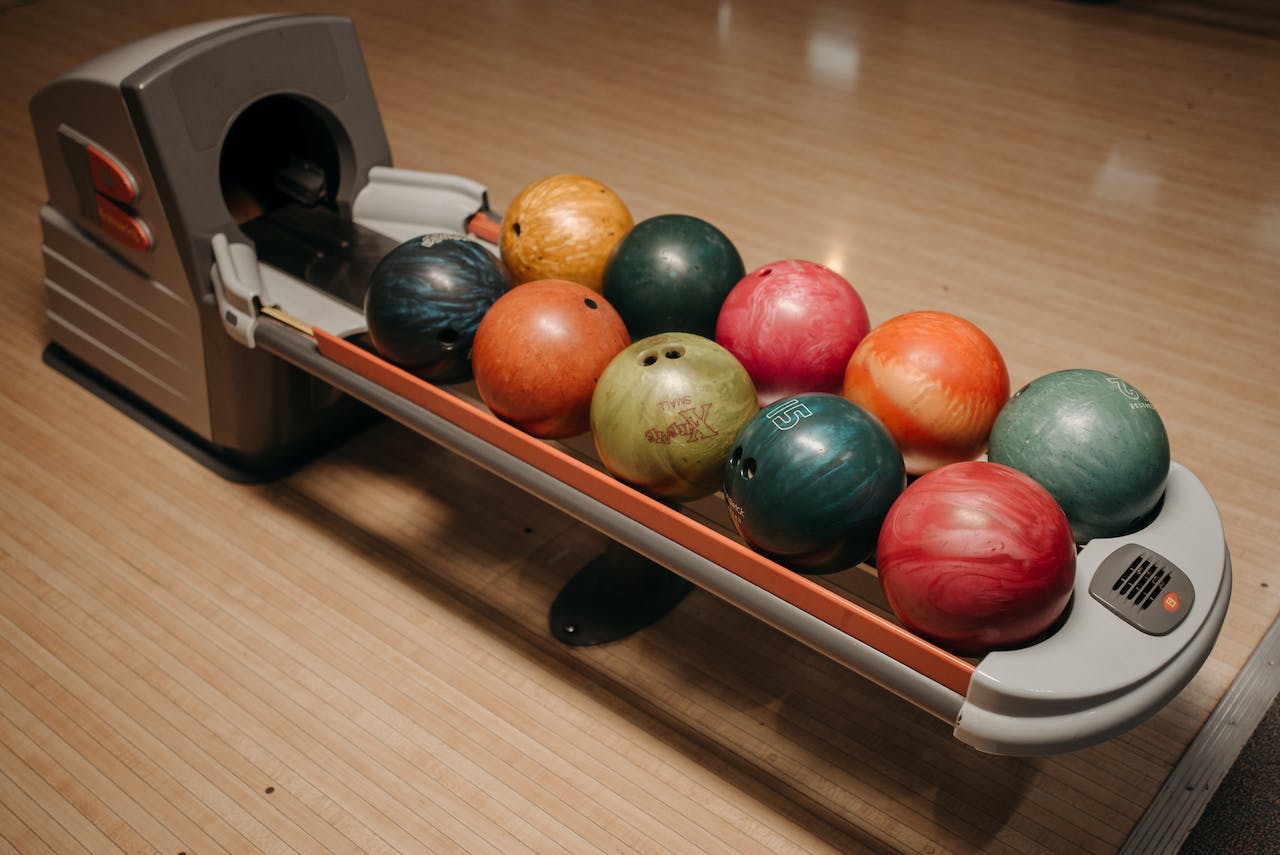When it comes down to choosing the right bowling ball, there are a bunch of factors that you need to take into consideration.
Weight, coverstock, finish the layout, and whatnot.
Enough to make a beginner end up scratching the forehead.
But don’t worry!
If you are a beginner and looking for an easy-to-understand guide on choosing a bowling ball, then you got it.
Hang on! Sit tight!
This article will give you enough to choose the right bowling ball on your own.
let’s get started…
Weight
The very first thing you would want to consider is the weight of the bowling ball since that plays a major role in how well you will be able to handle the ball.
You will be needing a balance weight.
If the ball is too heavy, that will give you a hard time handling the ball.
And if the ball is too lightweight that too is a problem. You will not get enough power.
So you will have to pick a balanced weight which isn’t too light and neither too heavy.
Now how do you find a balanced weight? Here is how.
There is a rule. And it is the method that most bowlers use.
According to that rule, for every 10 pounds of your body weight, you need 1 pound weight on the ball.
To make it clear, if you weigh 100 pounds, then you will be needing a bowling ball that weighs 10 pounds
Having that said, if you feel the ball is heavy for you then get rid of that.
Choose one that feels lightweight.
When you are holding the bowling ball that should not get you off balance.
If it does then that is not the right weight.
However, lightweight bowling balls are a little tough to control and straight delivery with a lightweight bowling ball is slightly hard as well.
But still, in some situations, they turn out extremely beneficial.
Coverstock
After you got the right weight, now time to check for the coverstock.
There are different types of coverstocks, serve a different purposes.
Polyester: polyester or plastic coverstock is for beginners.
This coverstock doesn’t hook, it goes straight. Just what a beginner needs to get a good hold of bowling.
Sometimes professionals use this as a spare ball as well.
Urethane: This one is used by professionals. Urethane coverstocks have high friction and they hook.
And when the bowling lane is very oily, controlling urethane bowling ball is very hard especially for beginners.
These bowling balls stroke good as well. Check out this source of some of the top-notch bowling balls for a stroker.
Beginners might find it hard at the beginning to control the urethane bowling ball.
Urethane bowling balls are expensive and hard to control which makes them an unsuitable option for beginners.
Reactivity
Reactivity of the bowling ball tells how reactive the ball is on the lane.
There are 3 types of reactive resin to choose from.
- Pearl
- Hybrid
- Solid
Pearl reactive resin coverstocks are not very reactive on the oily lane.
And nor they cause much friction which makes it a suitable option for intermediate bowlers
Pearl reactive resin bowling balls do hook but at a very minimal amount.
Solid reactive resin coverstocks do make decent friction on the oily lanes.
Due to the reactive controlling these balls could be a little hard at the beginning.
Lastly, hybrid reactive resin coverstocks are a blend of solid and pearl reactive resin coverstocks.
These balls have two sides consisting of pearl on one side and solid reactive coverstock on the other side.
If you are a beginner you should consider a solid reactive resin bowling ball for yourself.
Core
There are three types of cores to choose from.
- Pancake core
- Symmetrical core
- Asymmetrical core
How the ball will perform on the lane and how well you will be able to control the ball depends on the core as well.
Pancake core: most beginner polyurethane or plastic bowling balls come with a pancake core.
Controlling a pancake core bowling ball is pretty easy. And they don’t require much adjustment on different techniques.
Bowling straight and smooth with a pancake core ball is very easy.
Symmetrical core: this one is a little advanced than the pancake core. It doesn’t make much of a difference in bowling.
It is a very balanced core that gives smooth straight rolling.
Asymmetrical Core: This core is suitable for a certain bowling style.
An asymmetrical bowling ball offers more control to the bowler. And those who make angular shots to hit the pins will find the asymmetrical core perfect.
Conclusion
Just keeping these few factors in mind while choosing a bowling ball should be enough to end up with a good bowling ball.
There are few other things as well that require attention like flare potential, differential, finger hole layout, etc.
But the mentioned ones here are the most crucial ones.

